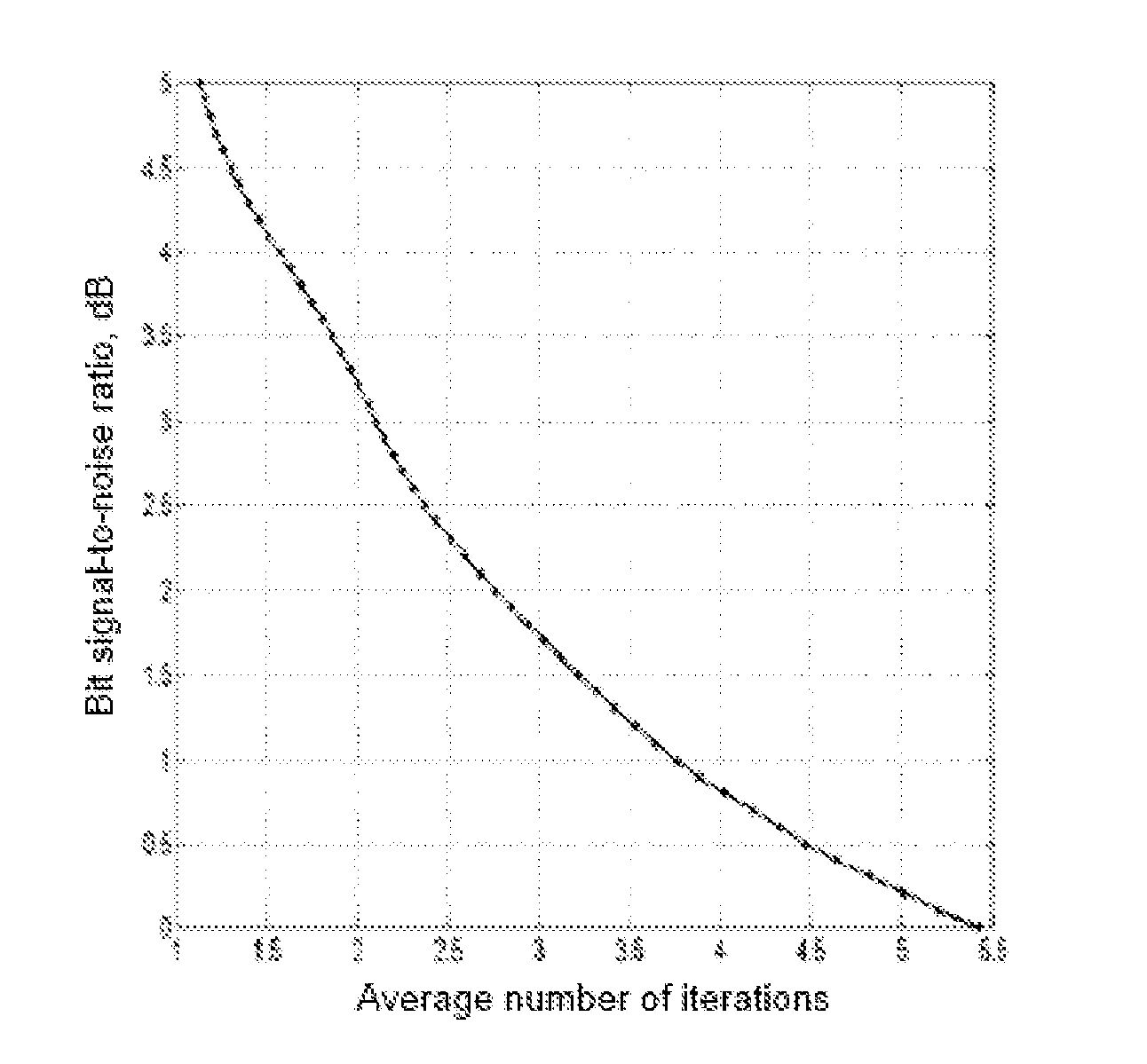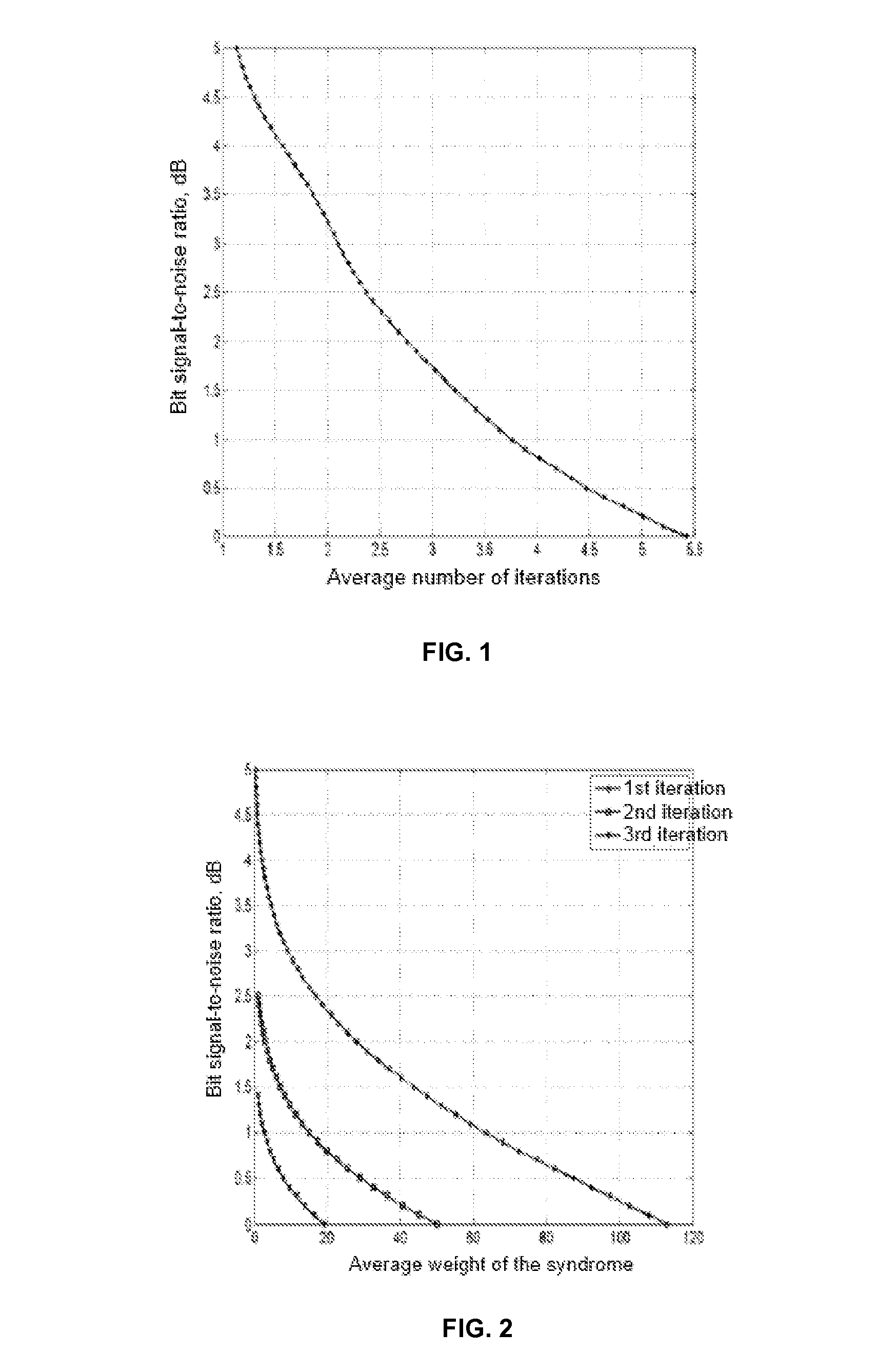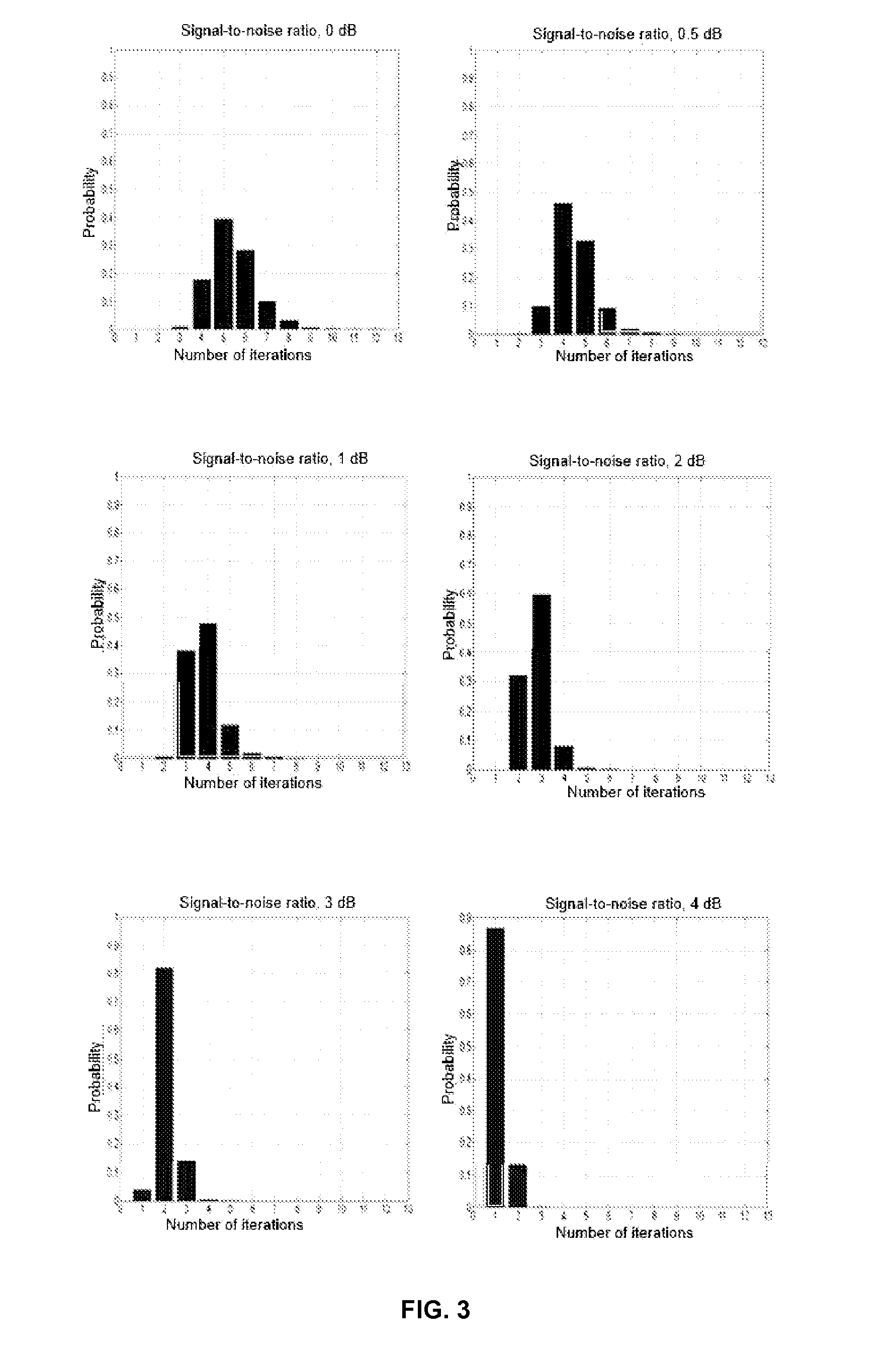Method and device for measuring the current signal-to-noise ratio when decoding LDPC codes
a signal-to-noise ratio and current signal-to-noise ratio technology, applied in the field of digital radio communication systems, can solve the problems of difficult application difficult use of this technology at small signal-to-noise ratios
- Summary
- Abstract
- Description
- Claims
- Application Information
AI Technical Summary
Benefits of technology
Problems solved by technology
Method used
Image
Examples
third embodiment
[0048]the method for measuring the current signal-to-noise ratio when decoding LDPC codes comprises the following operations: for a specified type of the LDPC decoder, the dependence of the average number of iterations when decoding an input code word on the signal-to-noise ratio, as well as the dependence of the average weight of the syndrome for a specified number of iterations when decoding an input code word on the signal-to-noise ratio are predetermined experimentally or theoretically. An input code word with “strong” or “weak” solutions is obtained from the output of the demodulator. The input code word is decoded in the decoder. An output code word is generated. When decoding each input code word for a specified number of iterations, the number of iterations performed during decoding and the weight of the syndrome are recorded.
[0049]For each specified number of iterations, the obtained values of the number of iterations and the weight of the syndrome are averaged for the spec...
fourth embodiment
[0051]the method for measuring the current signal-to-noise ratio when decoding LDPC codes comprises the following operations: for a specified type of the LDPC decoder, the dependence of the law of distribution of the number of iterations when decoding an input code word on the signal-to-noise ratio is predetermined experimentally or theoretically (FIG. 3 shows examples of these laws of distribution (histograms) for various signal-to-noise ratios).
[0052]When decoding each input code word, the number of the iterations performed during decoding is recorded. A histogram of distribution of the number of iterations for a specified time interval is constructed. Based on the comparison of this histogram of distribution of the number of iterations and on the earlier-derived dependences of the average number of iterations when decoding an input code word on the signal-to-noise ratio, an estimate of the current signal-to-noise ratio is derived.
fifth embodiment
[0053]the method for measuring the current signal-to-noise ratio when decoding LDPC codes comprises the following operations: for a specified type of the LDPC decoder, the dependence of the law of distribution of the weight of the syndrome for a specified number of iterations when decoding input code words on the signal-to-noise ratio is predetermined experimentally or theoretically (FIG. 4 shows examples of these laws of distribution (histograms) for various signal-to-noise ratios).
[0054]When decoding each input code word for a specified number of the iterations of decoding, the weight of the syndrome is recorded. A histogram of distribution of the weight of the syndrome for each specified number of iterations for a specified time interval is constructed. Based on the comparison of this histogram of distribution of the weight of the syndrome and on the earlier-derived dependence on of the law of distribution of the weight of the syndrome for a specified number of iterations when de...
PUM
 Login to View More
Login to View More Abstract
Description
Claims
Application Information
 Login to View More
Login to View More - R&D Engineer
- R&D Manager
- IP Professional
- Industry Leading Data Capabilities
- Powerful AI technology
- Patent DNA Extraction
Browse by: Latest US Patents, China's latest patents, Technical Efficacy Thesaurus, Application Domain, Technology Topic, Popular Technical Reports.
© 2024 PatSnap. All rights reserved.Legal|Privacy policy|Modern Slavery Act Transparency Statement|Sitemap|About US| Contact US: help@patsnap.com










